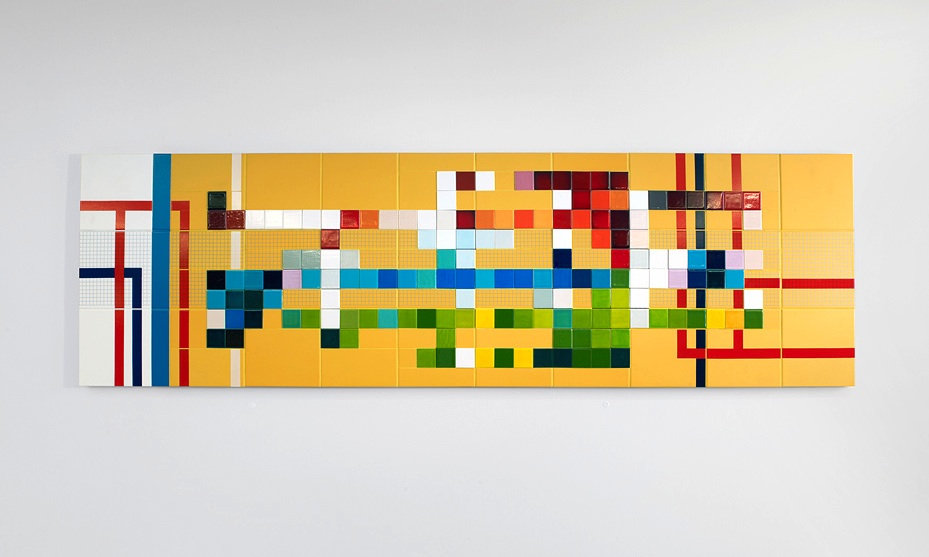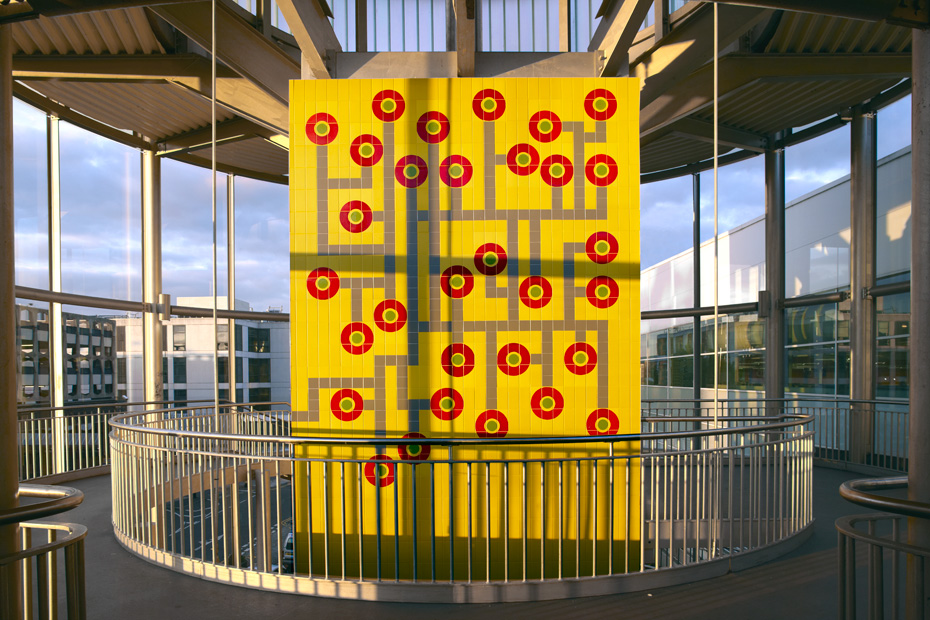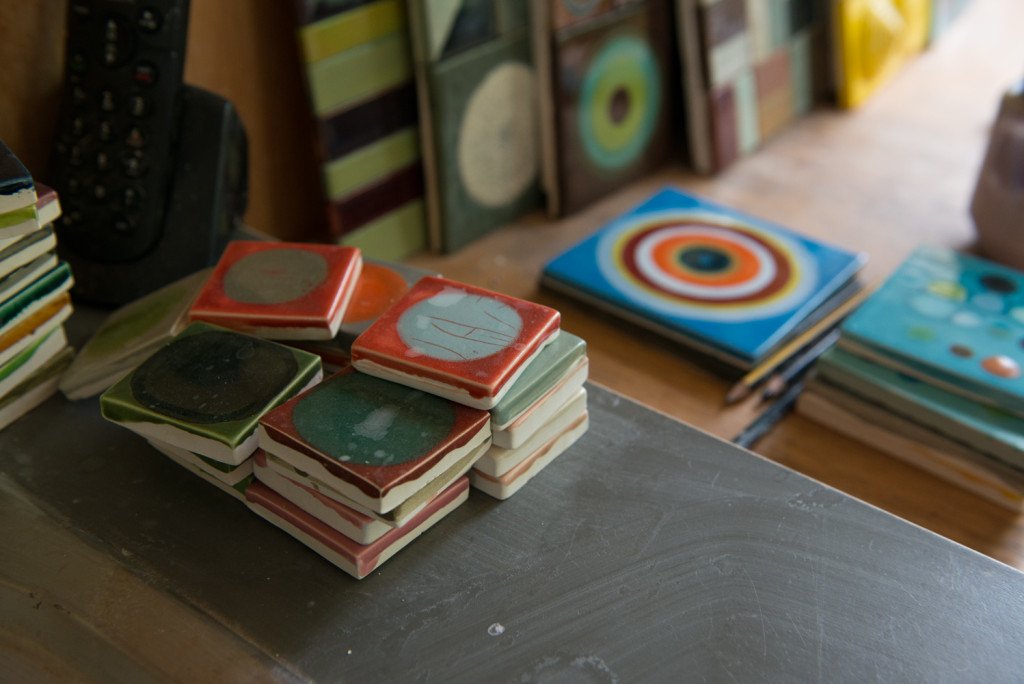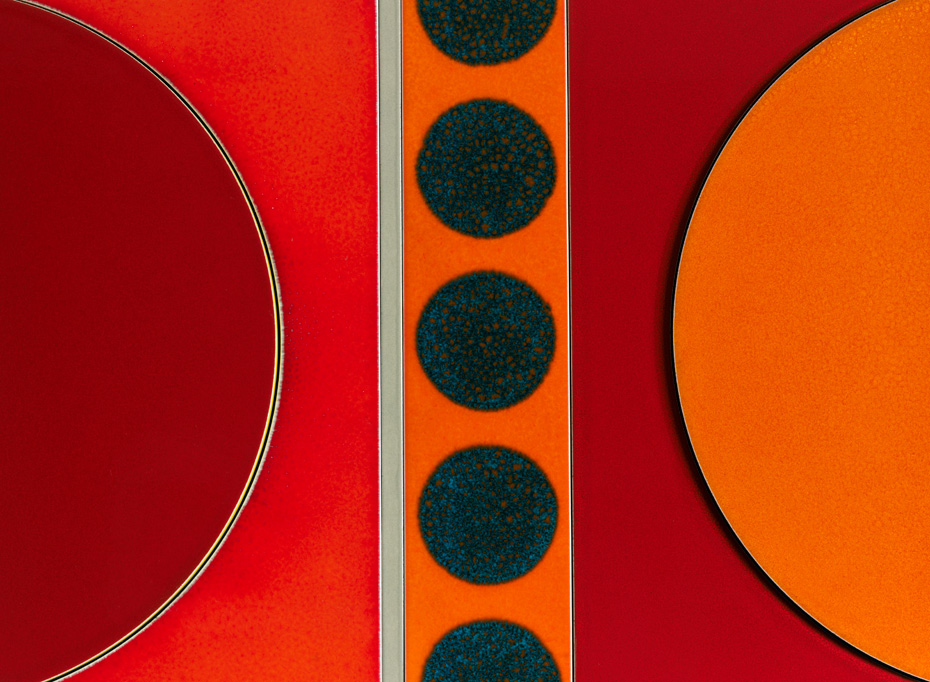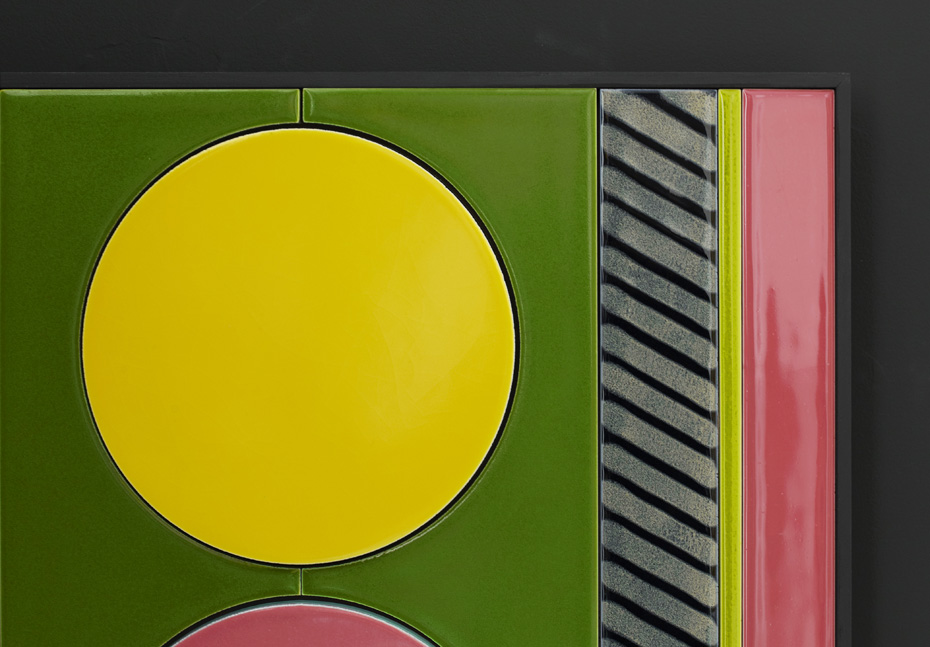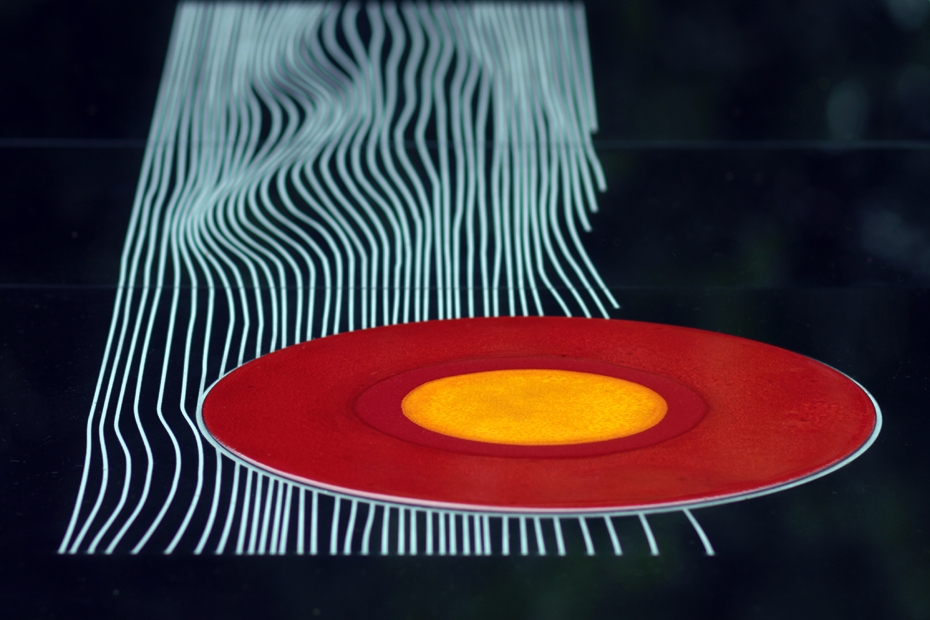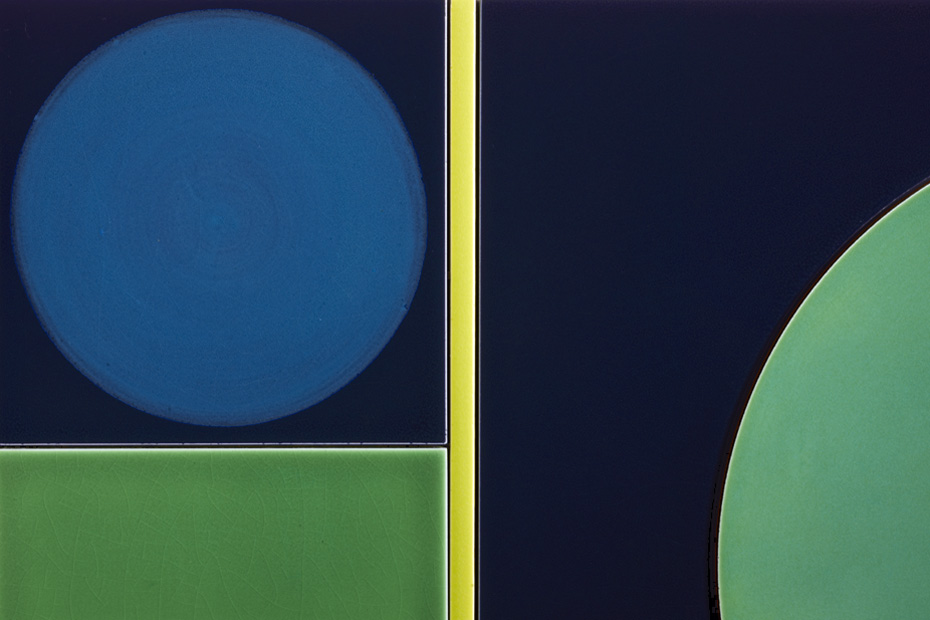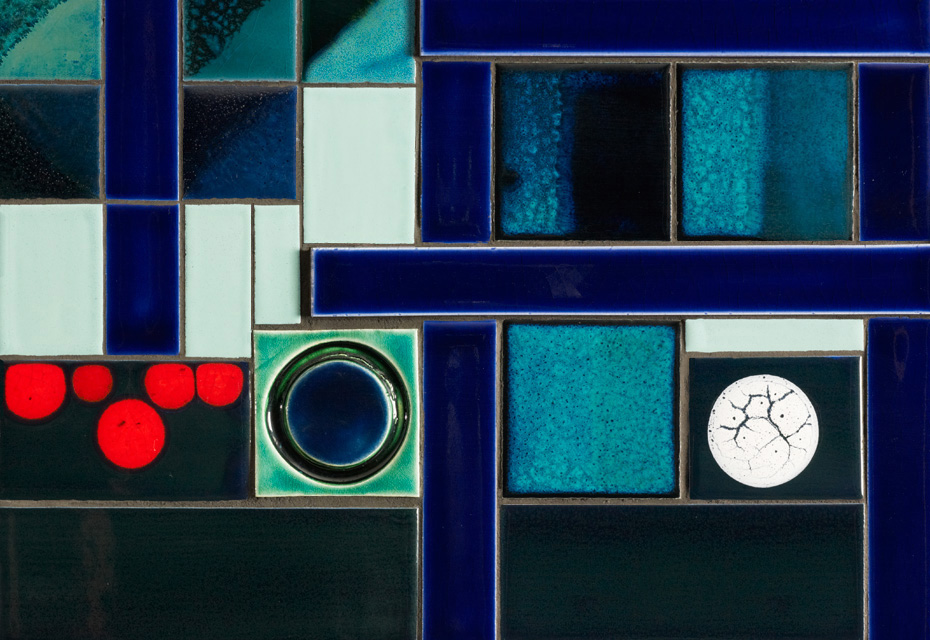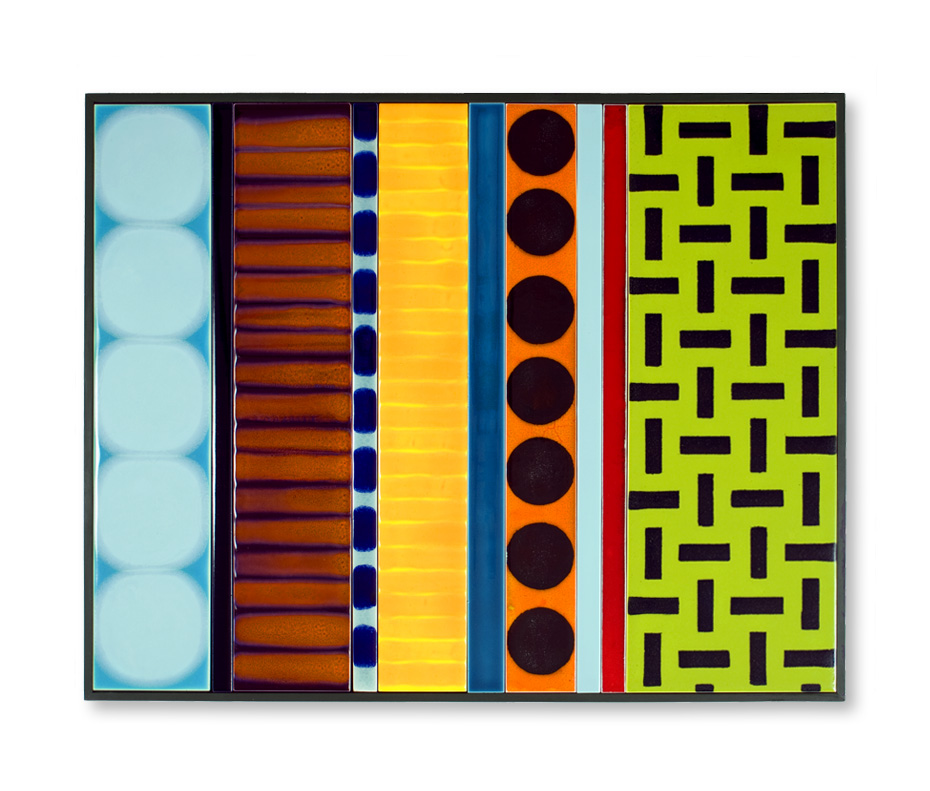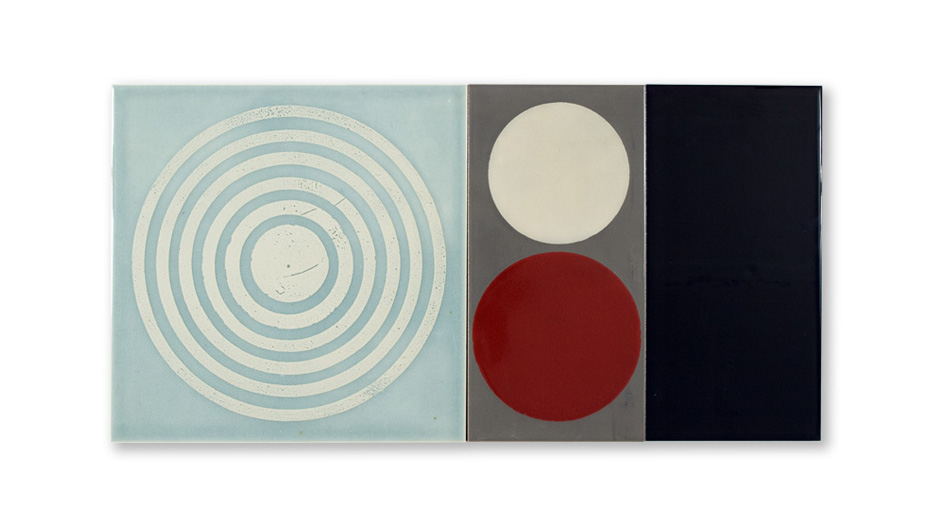We are delighted to share with you the amazing work of ceramic artist Lubna Chowdhary. A few weeks ago, we asked our friend and excellent photographer Juan Rendón to visit her home to get a closer look at the artist and her workspace. It wasn’t long before Lubna’s kind and sincere personality took over while showing Juan around her luminous studio. Tucked away in South West London in the backyard of her home, her place of work is bordered by a beautiful garden where her family grows their own vegetables. Once you see where most of her creations take place, it is no wonder Lubna’s work permeates happiness and playfulness. Her use of a bright and striking colour palette owing as much to her upbringing and cultural heritage as to her current surroundings.
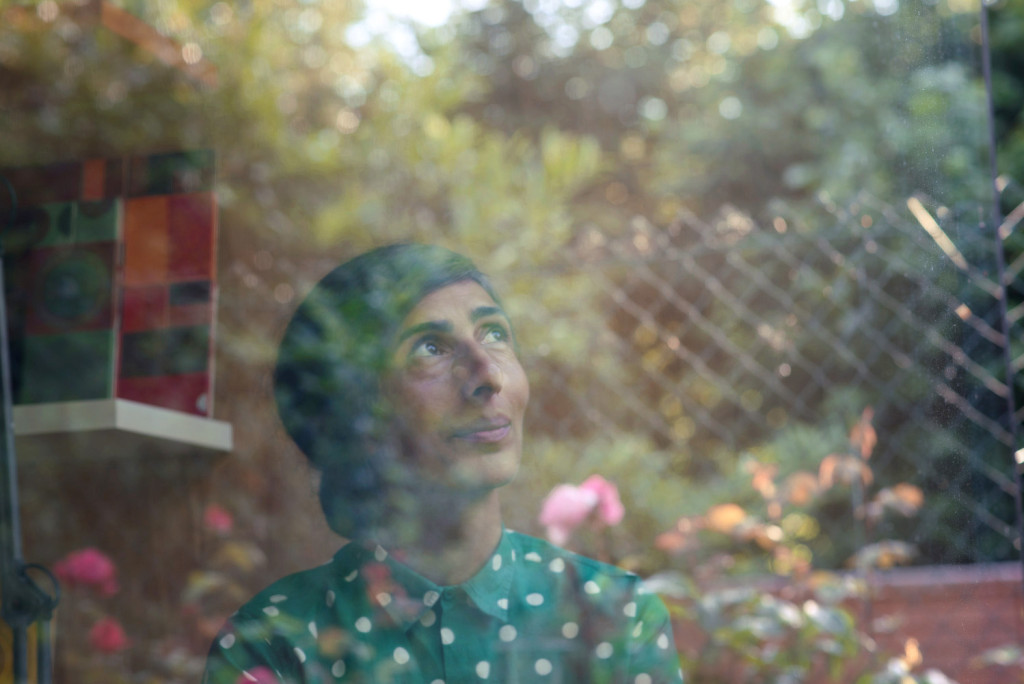
CF: Tell us a bit about your background. What were some of your early inspirations?
I was born in Tanzania to Pakistani parents and moved to England in 1970 at the age of 5, settling in Rochdale in the north of England. Our upbringing was traditional asian and working class and my parents started their own business selling western clothes. My mother was a seamstress at home so there was always a culture of making at home, whether it was clothes or food and having an understanding of sewing, pattern pieces, fabrics and the manual tasks involved in asian cooking served me well when I became an artist.
Formative early inspirations were anthropological collections such as the Pitt Rivers Museum in Oxford, the Tropen Museum in Amsterdam, and the Museum of Mankind in London. These encouraged me to step outside of an expected European perspective and aesthetic in my work. In a strange way these collections allowed me to view my own culture from a new, albeit distorted perspective.
Moving to London in 1989 and attending the RCA was a really exciting experience for me and it connected me to contemporary architecture and design in a real way. I also received a scholarship to visit India and this helped me to consolidate an understanding of the cultural influences at play in my life and I began to draw upon them more confidently in my work. Early in my creative career, I came across a term “horror vacui” – fear of empty space. This idea has been attributed to the all over designs prevalent in the Middle East and Indian sub-continent and I always remind myself of this when I’m in danger of being too restrained.
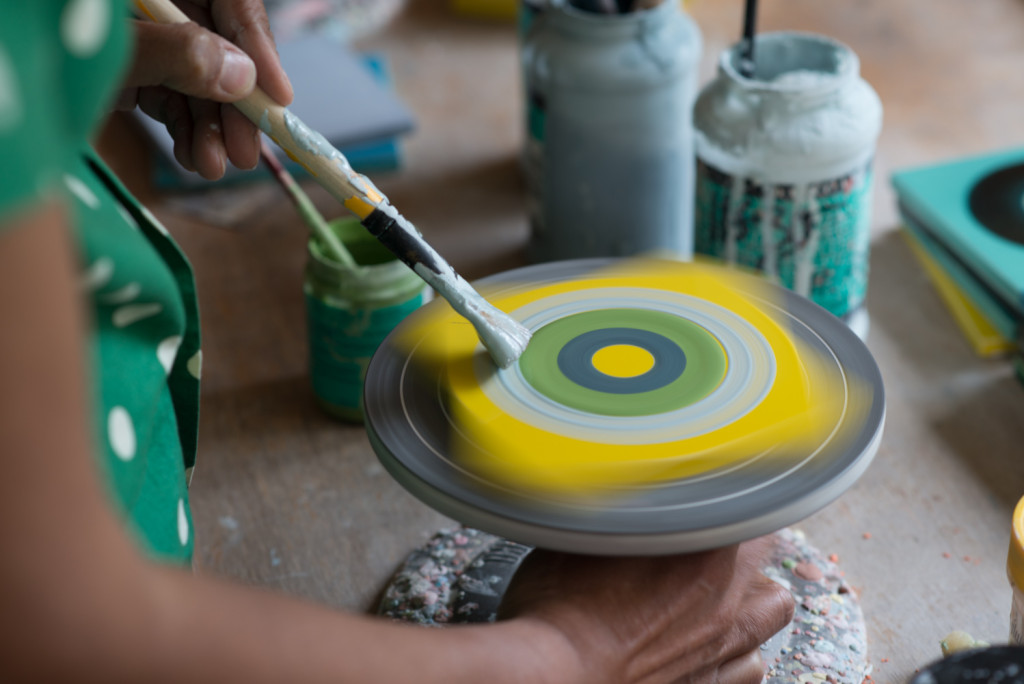
CF: What is it about ceramic as a medium that first caught your attention? When did you come to the realization that it would become your preferred material to express your creativity?
Studying on a design course in wood, metal and ceramics, I was drawn to all three materials for different reasons. but the particular quality of ceramics is the immediate and direct relationship between the human hand and the material which enables you to mould it without the use of tools. I concentrated on form and surface for many years before colour became an obsession at a point when I started working with two dimensional ceramics – tile.
“The modularity of tile means you can work on a small or large scale and the projects can be functional and conceptual”
CF: You’ve completed projects for many different purposes and in many different locations. From a park in Cambridge to a bar in a New Delhi hotel. Which have been your favorite projects so far and why?
Yes my projects are really varied. The modularity of tile means you can work on a small or large scale and the projects can be functional and conceptual. My favourite projects… I often enjoy responding to an external brief and Nocturne was really interesting to work on because it revealed many parallels in the creation of musical and visual composition. I also enjoyed working on the Ten Tables project because it allowed an increase in scale and I felt I’d grasped a new and exciting technology which I’d like to explore further. However the projects that I feel I’ve really succeeded with are those that become a permanent part of the architectural environment such as the Lantern Tower in Slough.
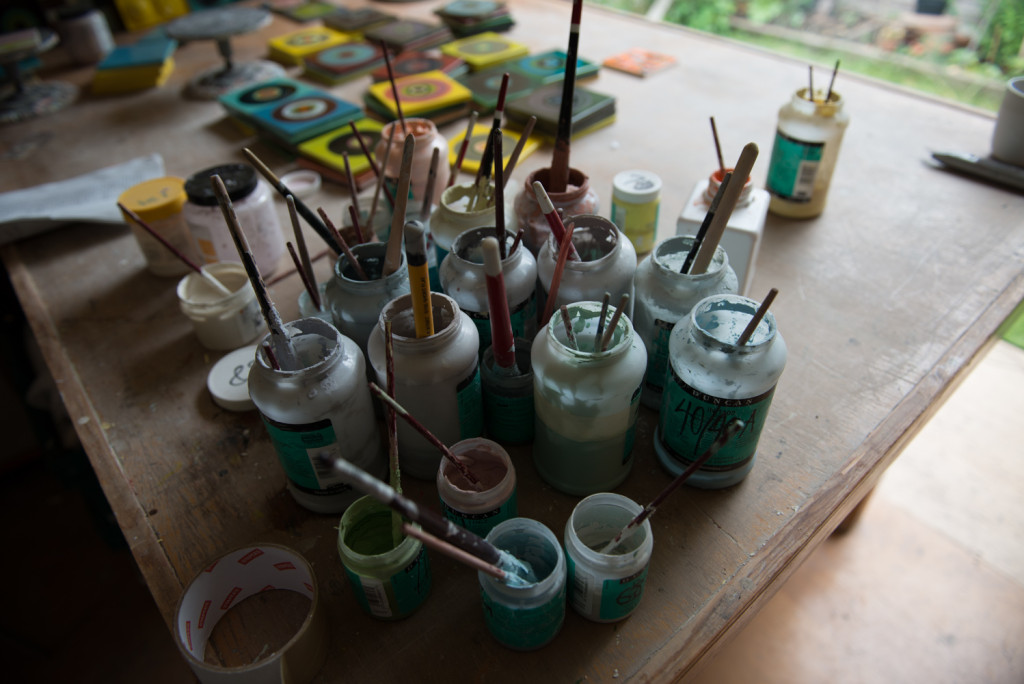
CF: If you could choose a soundtrack for your work, what would you choose?
Some initial thoughts are…
Lata Mangeshkar, Asha Bosle, Congotronics, Teshome Meteku / Ethiopiques, Holger Czukay, Josephine Foster – Child of God, Sam Amidon, Bill Callahan, Cheikha Rimitti, Thurston Moore – Benediction, or Victoria De Los Angeles.
CF: What is your favorite thing about living in London?
That you are only ever scratching the surface of what London is and has to offer.
“the manual tasks involved in asian cooking served me well when I became an artist”
CF: Are there any upcoming projects you could share with us? Is there a specific kind of project you’ve never had the chance to work on that you wish to complete in the future?
The Portuguese have a bold, confident approach to ceramics where the whole façade of a building is often covered in patterned ceramics. I’d like to be given the opportunity to do something similar. I’ve just come back from Morocco where tiles are seen everywhere. They have a “less is a bore” attitude to the application of pattern and colour to multiple surfaces. A swimming pool or a London underground station would be great larger scale projects to get my teeth into.
Another project that I’ve had on the back burner for a many years is to build a ceramic, architectural folly. This would be a perfect resolution for my interest in architecture, form and surface. I have to find a space to build it…
